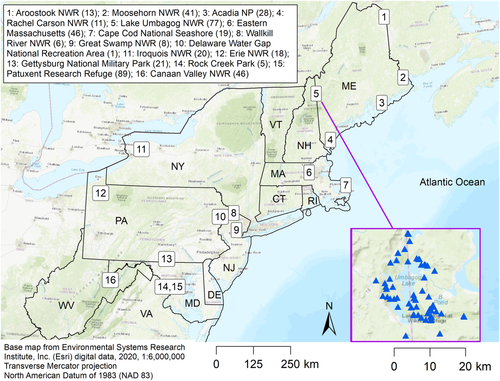Mapping climate-resistant vernal pools: hydrologic refugia for amphibian reproduction under droughts and climate change
Abstract/Summary
Vernal pools of the northeastern United States provide important breeding habitat for amphibians but may be sensitive to droughts and climate change. These seasonal wetlands typically fill by early spring and dry by mid-to-late summer. Because climate change may produce earlier and stronger growing-season evapotranspiration combined with increasing droughts and shifts in precipitation timing, management concerns include the possibility that some pools will increasingly become dry earlier in the year, potentially interfering with amphibian life-cycle completion. In this context, a subset of pools that continue to provide wetland habitat later into the year under relatively dry conditions might function as ecohydrologic refugia, potentially supporting species persistence even as summer conditions become warmer and droughts more frequent. We used approximately 3,000 field observations of inundation from 450 pools to train machine-learning models that predict the likelihood of pool inundation based on pool size, day of the year, climate conditions, short-term weather patterns, and soil, geologic, and landcover attributes. Models were then used to generate predictions of pool wetness across five seasonal time points, three short-term weather scenarios, and four sets of downscaled climate projections. Model outputs are available through a user-friendly website allowing users to choose the inundation thresholds, time points, weather scenarios, and future climate projections most relevant to their management needs. Together with long-term monitoring of individual pools at the site scale, this regional-scale study can support amphibian conservation by helping to identify which pools may be most likely to function as ecohydrologic refugia from droughts and climate change.
Publication details
| Published Date: | 2021-09-02 |
| Outlet/Publisher: | |
| Media Format: |
ARMI Organizational Units:
Northeast - BiologyTopics:
DroughtPlace Names:
Northeast U.S.Keywords:
distributionhabitat
hydroperiod
wetlands

